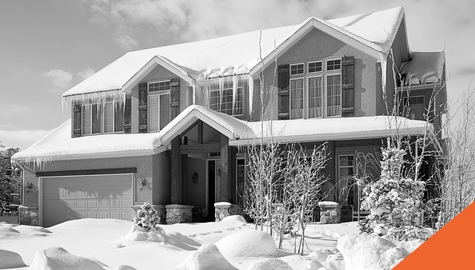How to Winterize Your RV
Thursday, 31 October 2019
With fall in full swing, it is time to finally pack the summer away. If you don’t plan on using your RV this winter for any family road trips, it may be a good idea to get it stored away early so it can stay in proper shape over the winter. It is beneficial to do this before the winter weather hits, that way it is packed up and you don’t have to worry about winterizing your RV in freezing temperatures. Learn more about how to winterize your RV in this blog post.
Winterize Your RV - Fully Winterize Your Water System
The first thing you want to do to winterize your RV is to prepare your water system. You want to start by draining it. At an approved RV dump station, drain your fresh water holding tank. Next, drain your waste water holding tanks, including your black water and then your grey water, that way the grey water can wash out the black. Once that is complete, you want to drain your cold and hot water lines, and the water heater tank. It is important to never drain the heater tank when it is hot or under pressure. Open the hot tap in the kitchen of your RV to alleviate pressure and then allow the tank to cool before you drain it. Lastly, drain the water filter and dispose of it. Re-install an empty filter.
Next, bypass the hot water heater. Most RVs have a permanent bypass on the water heater which you turn the valve(s) to the bypass position. If your RV does not have a bypass system, you will need to purchase a temporary one. Your water heater has a line in the bottom that allows cold water to go in. On top, there is a hot water line that fills the hot water pipes. Connecting these two water lines is a bypass pipe, which prevents antifreeze from entering the heater. The valve on the bypass pipe must be open (parallel) to allow the water to bypass the heater.
You will then have to pump non-toxic antifreeze through the water lines to ensure there is no more water left in the system. You can install a 12-volt water pump converter kit to do this. While the antifreeze is pumping through the water system, slowly open all the faucets/valves until the antifreeze appears, starting with the closest faucet to the water pump. Do this with the following valves, opening the hot and cold taps individually: kitchen taps, bathroom taps, bathroom tub and shower-head, toilet and outside shower. Pour a cup of antifreeze down the drains, and finally, turn off the water pump.
Winterize Your RV - Remove and Protect the Battery
Before winter hits, you will want to winterize your RV by removing any batteries (main battery, smoke detector, etc). These batteries should be stored in a dry and warm place, in your garage or basement is a good place to keep them over the winter. Also, do not store them directly on a concrete floor. Concrete drains the power from batteries and you will have a dead battery by the end of winter. Before you remove your batteries make sure to wear safety glasses and gloves. Disconnect the shore power, turn off all RV power and make sure the main cutoff is in the OFF position. When disconnecting the battery, always remove the negative cable first.
Winterize Your RV - Protect the Exterior
Check the exterior of your RV. You want to look out for water leaks, so check the caulking for any cracks or damage around the windows, doors, roof vents and other seams. If you find any damage, fix it by removing the caulking and replacing it. Next, you can give the RV a thorough washing to clean it from dust, dirt and any other debris that you notice. After the vehicle is clean, apply a coat of a good quality wax to protect the exterior over the winter and into the next summer season.
Apart from cleaning and waxing the exterior, there are few small chores to finish before winter comes. You should inspect the awning as well before putting your RV in storage. If you do not clean and dry the awning, it can grow mold and mildew over the winter. You can cover the tires to shield them from the elements and to stop the sun from damaging them. Lubricating the locks and hinges can prevent creaks, jams and breaks when it comes spring time. Lastly, if you decide to cover the RV with a tarp for the winter season, make sure it is breathable to avoid trapping in moisture.
Winterize Your RV - Tidy up the Interior
Lastly, to winterize your RV you should clean the interior of the vehicle! Not only clean it but sanitize it too. An RV has great hiding spots for little critters and mold. It is important to remove all leftover food or beverages, clothing and blankets to be stored in your home. A big thing you want to avoid in your RV over the winter is extra moisture. To combat this, take out the couch cushions and mattresses and lean them against the wall for maximum airflow. If you are keeping the RV near a power source and can check it often throughout the winter, it might be a good idea to run a de-humidifier a couple times during the season. If not, leave moisture absorbing materials inside to catch as much humidity possible. Finally, cover up the windows on the inside to avoid the sun from fading drapery or cushions inside the RV.
Let us know if these tips helped you and your RV survive the winter. Hopefully it is not too long before you can de-winterize and get your vehicle back on the road for more summer trips. If you are curious about how to insure your RV, we can help with that.



